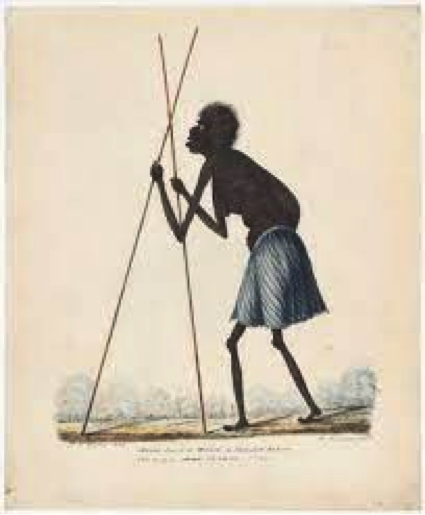Governor Bourke’s Proclamation (1835) is an original hand written document by Governor Richard Bourke, Sydney NSW 1835.
The document states, “Given under my Hand and Seal, at Government House, Sydney, this twenty sixth Day of August, One thousand eight hundred and thirty-five”.
The document is a primary source; a copy is available in the New South Wales Government Gazette No 3 411. The Proclamation tells us that by His Excellency’s Command, Australia, (then known as New South Wales), was a vacant land.
Governor Bourke is declaring any previous treaty with the Aboriginals in relation to the land is void. The document is stating that, New South Wales (Australia) is a Colony of the Crown. The Proclamation indicates that the previous treaties with the Aboriginal Natives are not valid. Void means the transaction, by way of Treaty, did not exist.
Bourke is declaring that it has been ‘represented’ to him that New South Wales was a vacant land before being occupied by the ‘divers of his Majesty’s Subjects’; stating that a treaty with the Aboriginal Natives was a mistake. The purpose of the document is to claim the land as a Colony of the Crown (Britain), to void any claim the Native Aboriginals might have to the land by way of treaty and to declare that trespassers ‘will be dealt with’.
The Proclamation tells us that the Crown considered ethnocentric rightful ownership of the whole of the vacant land that they discovered and occupied; and that their society did not classify the indigenous natives as human or as rightful owners of the land. The document, produced for the purpose of Legal Title to the entire land for the Crown, we are looking at a society with a formal legal system.
The Proclamation is demonstrative of a society geared toward exploration, colonization and governance. The declaration indicates a society that has a belief system in God; a society with a religion; and a Monarch with Sovereignty over his subjects. Appointed Governors represent the Crown; a Kingdom, English speaking, united by race, law codes and geography with written language and formalized systems of behavior.
Rulers accept ‘representation’, therefore council on matters of importance; they have a formal system of governance. Governor Bourke’s proclamation demonstrates a society, superior to the Aboriginals Natives, as judged by their benchmark. Modern day Romans, a society whereby trespassers are not welcome and natives are not landowners.
In order to understand the significance of Governor Bourke’s Proclamation (1835) one must look at a secondary source document. Power Knowledge and Aborigines, (1992) Edited by Bain Attwood and John Arnold, is a collaborative journal of Australian Studies by historians and a useful resource.
I am going to focus on the introduction authored by Bain Attwood to look at White Rule in Australia and attitudes. Attwood’s theory asserts that Australian Aboriginalism’, defined by white man’s knowledge, was a quest for power. European Power therefore constructed Aboriginality. The mechanism was to disempower and therefore deny natives as the rightful owners of the land ‘personhood,’ (introduction I –XVI).
A law of Colonization by manipulation of power and knowledge hence positioned Aboriginality to suit the colonizer. Aboriginals disempowered and dehumanized, to the point of an object of nature, rather than humans of standing. Knowledge was a production for the purpose of control over the land.
A key point to justify the colonizers stance is the bias that Indigenous people are inferior and deemed less evolved because “usually Aborigines are ‘black male bearded and scantily dressed.’”
Attwood points out that “colonial lawmakers and statisticians increasingly categorized Aborigines in terms which were predominantly racial” looking at theory’s such as the Rousseau’s ‘Noble Savage’ and Edward Said’s ‘Orientalism’ to back up his argument.
Orientalism can be defined a false belief fostered by the view of superior science and technological achievement attributed to the white race; this argument suited colonization. Governor Bourke’s Proclamation demonstrates a Colonizer, superior to Aboriginal Natives, as judged by the colonizers benchmark.
Governor Bourke’s Proclamation is a knee jerk reaction to Batman’s Treaty with the Aboriginals over the purchase of land in 1835; this was to facilitate absolute control over the whole of the land for the Crown.
Atwood’s observations reinforce Bourke’s belief as being ‘correct’ thinking at that time; Atwood quotes the ‘illiterate savage Aborigines had no history ‘and asserts colonizers belief that ‘European history is linear therefore progressive,’ Bourke’s thinking also. Quoting the Australian Constitution 1901, (Section 127) ‘with reference to numbers of people of the Commonwealth’, ‘aboriginal natives shall not be counted’ Atwood demonstrates aboriginal people have historically suffered injustice because of Colonization, Bourke’s Proclamation, pivotal.
Power Knowledge and Aborigines, analyses European attitudes as a ‘belief of being a superior race’ and therefore regards Aboriginal and Torres Strait Islanders as inferior savages, (noble or otherwise). This helps justify non-sovereignty to natives as Bourke’s proclaiming.
1835 looms large in the significance of shaping Australia as a nation. White Possessive (2015) by historian, Aileen Morton-Robinson looks at White Rule in Australia. Morton-Robinson’s theory asserts Australia was a vacant land largely because this best suited the purpose of colonizers who believed they were superior and rightful possessors, something Attwood states.
Captain Cook perceived indigenous peoples as being an ‘inseparable part of nature’ and denies them rightful ownerships of the land by failing to acknowledge ‘personhood’. Morton-Robinson argues Cook is perpetuating a ‘scientific lexicon,’ (a branch of knowledge that asserted white race superiority) written for whites by whites for their own hubris and power, Bourke’s proclamation falls into line with this.
Bias established Indigenous people inferior and less evolved because of skin colour, also backed up by Attwood’s research. Morton-Robinson points out that Cook perceived the Aboriginal people to be “living in a state of nature” wild and without will; a false belief fostered by the view of superior science and technological achievement attributed to the white race. Primary source documents such as a journal entry by Cook, July 19 1770 recounting the day Aboriginal Natives came onboard the Endeavour and their reaction to the theft of turtles by Cook’s Men reinforces Bourke’s Proclamation (1835).
Cook wrongly perceives the natives interest in the turtles as ‘hunger.’ The natives are in fact angry about the theft of their turtles by the white men (sovereignty). In order to demonstrate her key argument about the misunderstanding that existed between white ‘invaders’ and the Aboriginal peoples of Australia, Morton-Robinson looks at Indigenous narrative and feeling, primarily summed up by an old man called Hobbles, about Cook’s ‘invasion’ and social inequality.
Cook’s thinking, Hobbles Lament and Governor Bourke’s Proclamation demonstrate Aboriginal Natives, as judged by an ethnocentric benchmark; whereby “trespassers will be dealt with” and natives are not landowners. Governor Bourke’s Proclamation is a knee jerk reaction to Batman’s Treaty with the Aboriginals over the purchase of land in 1835; this was in order to facilitate absolute control over the whole land for the Crown. Bourke assertion, Aboriginal and Torres Strait Islanders’ have no Sovereignty over the land, is explained by Attwood’s concept of white ‘power’ and ‘knowledge’.
Bourke’s Proclamation (1835) effectively extinguishes Native Title by voiding any validity of Batman’s Treaty (1835). Attwood validates Aboriginal non-sovereignty as being ‘interpretive’ and ‘contingent on colonial power relations’ (P. XV). Therefore, preconceived opinion, the ‘vexed issue of extinction’ (Darwinism) provided a false hope for the ‘invaders’ to deny Indigenous Sovereignty.
Reference material:
Attwood, B & Arnold, J (Eds), (1992) Power Knowledge and Aborigines,
La Trobe University Press in association with the National Centre for Australian Studies, Monash University,
Printed in Australia by Aristoc Offset, Melbourne
Amigoni, D & Wallace, J (Eds), (1995) Charles Darwin’s The Origin of Species, New interdisciplinary essays, Manchester University Press
Billot, C. P. 1979 John Batman and the Founding of Melbourne, Highland House Publishing Pty Limited South Yarra Melbourne VIC
Governor Bourke’s Proclamation (1835)
The document is a primary source; a copy is available in the New South Wales Government Gazette No 3 411.
Bourke, R. (1835) Proclamation. New South Wales Government Gazette, NSW.
Boyce, J. (2011), 1835 The Founding of Melbourne and the Conquest of Australia Published by Black Inc., Collingwood VIC Australia
Moreton-Robinson, A. White Progressive University of Minnesota Press, (2015). ProQuest EBook Central. Web. 21 July 2016. Created from latrobe on 2016-07-21:16:38


